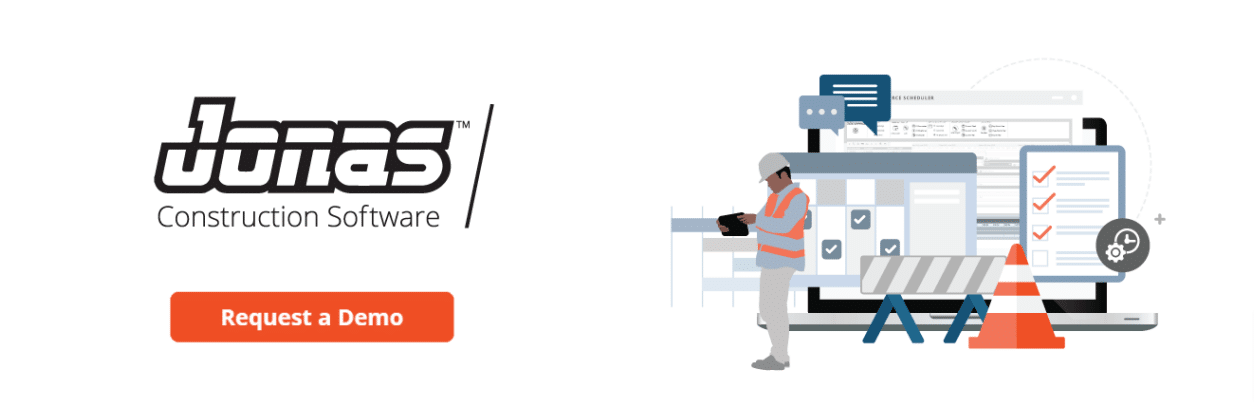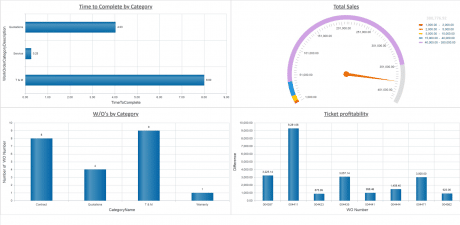Last Updated on July 17, 2023

The United States Construction industry is one of the top revenue-generating industries in the world! However, it’s still important for this industry to continue to adapt and keep up with the economic and social climate.
Recent years have seen not only a lot of growth in this industry but also an increase in risks, which was especially evident due to the COVID-19 pandemic. That’s why it’s especially important for contractors and construction companies to stay informed of US construction industry trends. This information will give you the insight you need to continue growing your business despite the changes and challenges you may face.
In this article, we’re diving deep into the US construction statistics that you need to know to make the best decisions for your construction business.
General Outlook of The US Construction Industry
First, Let’s take a look at the state of the industry in the US as a whole and in various locations across the US.
The Bad News
Let’s get the bad news out of the way first. 2020 was a tough year for the US construction industry. Volatile disruptions such as emergency policies, reduced oil prices, and social unrest lead to a decline in the overall value of new US construction compared to 2019. In 2020, overall construction in the United States dropped to around $1.36 trillion (Statista). Additionally, 31% of contractors have applied for loans or other financing since the start of the COVID-19 pandemic (levelset).
The Good News

Fortunately, the future of the construction industry still looks bright, despite an especially challenging year. By 2030, global construction spending is predicted to reach $17.5 trillion (Statista). This projected growth should prove to be especially favorable for the US construction industry as one of the largest construction industries in the world.
In 2020, US construction spending in the private sector experienced a surprisingly positive trend, now reaching $1.11 trillion (Statista). Additionally, the construction of private residential and nonresidential buildings saw some of their biggest ever-recorded numbers (Statista). This means that private construction continued to grow despite the economic downturn caused by the COVID-19 pandemic.
Construction Demands by Location
Construction demands are not evenly spread across the US. Some US cities experience significantly higher construction demands than others. The following statistics show the concentration of construction demands in the US:
- 20% of U.S. construction occurs in New York, Dallas, Houston, Los Angeles, and Washington. (Built Worlds)
- In the next 3 years, 50% of all US construction is predicted to occur in just 20 cities. (Built Worlds)
- California, Texas, Florida, Illinois, and New York, are the top 5 states renting construction equipment in the US. (BigRentz)
Construction Industry Issues
As we discussed earlier, the construction industry has faced many challenges due to the COVID-19 pandemic. However, the industry also deals with growing issues outside those that the pandemic has caused. These include issues such as underperformance, rising construction costs, and productivity challenges. We will address each of these issues in the sections below.
Underperformance
Underperformance is an important concern for US contractors and construction firms because it affects client satisfaction and retention, and therefore business growth. If you want to continue to grow your business in this climate, it is important to address underperformance and find new ways to boost performance.
The following statistics will give you a clear picture of the common underperformance issues in the US construction industry:
- Although innovative leaders (the top 20%) report that two-thirds (66%) of their projects come within 90% of their planned schedule, only 14% of other construction companies report a similar success rate. (KPMG)
- 69% of project owners report workforce performance to be the biggest reason for project underperformance. (KPMG)
Rising Construction Costs
The next issue we’ll look at is construction costs. Global construction costs are expected to rise 4.3% on average (Turner & Townsend).The higher construction costs rise, the less revenue construction companies stand to earn. If your business is struggling with rising construction costs, you will need to find new ways to boost profitability such as increasing your construction prices. However, there are more favorable ways to mitigate your costs, such as through the use of construction software, which we will discuss later in this article.
The following statistics show a few of the primary causes of the overall rising construction costs:
- In 2019, there was a 2.9% increase in construction worker salaries (The Bureau of Labor Statistics)
- In 2019, there was also a 10% increase in construction material costs (ABC)
- Labor shortages have pushed 44% of construction firms to increase prices (AGC)
- Steel and aluminum tariffs are a significant concern among contractors, with 40% expecting them to highly affect their business for the next few years
Productivity challenges
With rising costs, it becomes increasingly important to boost productivity to maximize business profits. However, productivity is also a key challenge faced by businesses in the US construction industry. An estimated $1.63 trillion could be saved annually from productivity improvements in the global construction industry (McKinsey Global Institute). Yet, many construction businesses are not making the necessary changes to increase productivity.
The first step to improving productivity is understanding where the productivity issues stem from. Many factors may decrease the productivity of a construction firm. This may include poor communication, poor schedule management, or time spent on non-productive activities. The following statistics will give you a clearer picture of what elements may be causing your productivity challenges:
- 45% of construction workers report spending an unexpected amount of time on non-productive activities (Autodesk + FMI)
- Construction workers spend over 14 hours per week on non-productive activities (ex. Looking for project information, conflict resolution, rework) (Autodesk + FMI)
- In 2018, non-productive activities cost the US construction industry over $177 billion in labor costs (Autodesk + FMI)
- Problems with coordination and communication and quality issues with contract documents are reported by 60% of general contractors as key contributors to decreased productivity (Autodesk & Dodge Data & Analytic)
- 68% of construction workers suggest schedule management as the key contributor to decreased labor productivity. (Autodesk & Dodge Data & Analytics)
- 30.9% of construction workers suggest that unresponsiveness to questions/ requests is a top reason for unproductivity and miscommunication (Autodesk + FMI)
Technology and the Construction Industry

One of the ways that many construction businesses are adapting to challenges is through the use of construction technology. Using technology can benefit construction businesses by increasing productivity, reducing labor costs, improving collaboration, and much more.
Construction technology also varies greatly from drones, augmented reality, and autonomous equipment, to fully-integrated construction software. First, we’ll discuss general construction technology statistics and then dive into construction software usage and impact statistics.
Here are a few interesting statistics that demonstrate the technological future of the US construction industry:
- $10 billion has been allotted to funding construction technology in the past decade (financesonline)
- About 60% of construction companies have research and development departments for new technology. (JBK)
- In trials, autonomous vehicles have delivered a 40% improvement in efficiency (financesonline)
- 63% of contractors use drones on their projects. (USG + U.S. Chamber of Commerce)
- Augmented reality is said to improve collaboration within construction firms, however only 6% of construction companies use AR due to the high costs (financesonline)
- 33% of contractors expect to use wearable technology in the next three years. (USG + U.S. Chamber of Commerce)
Construction Software Usage
Although many firms recognize that construction technology (particularly construction software) can be an asset to their business, many companies still do not take advantage of the tools that are available.
Some construction technology is also more widely adopted than others. For example, 75% of construction companies use cloud storage (CITE + Dropbox), but only 18% of companies use mobile apps to access project data on-the-go (Autodesk + FMI).
The following are additional statistics to give you a general idea of construction technology and software adoption and usage in the United States. These statistics may also give you an idea of where your company is falling behind.
- 75% of construction companies provide project managers and field superintendents with mobile devices to use in the field (Autodesk + FMI)
- 53% of large companies use software to manage safety/ inspections on more than 50% of projects (Autodesk & Dodge Data & Analytics)
- In 2018, 2 out of 5 construction industry professionals planned to purchase or upgrade construction management software (financesonline)
Construction Software and Technology Impact
If your construction business has yet to take full advantage of the software and technology available, it’s not too late! These statistics will prove that making the switch to construction software and technology is a valuable investment in your business’ future.
- 70% of contractors believe that advanced technology increases productivity (USG + U.S. Chamber of Commerce)
- Full scale digitalization (the development and deployment of digital technologies and processes) can lead to a global cost savings of $0.7-1.2 trillion (13- 21%) in the Design & Engineering and Construction phases and $0.3-0.5 trillion (10-17%) in the Operations phase. (World Economic Forum)
- 52% of contractors consider field staff needs as a top consideration for technology investment (Autodesk + FMI)
- By 2035, Construction AI has the potential to increase construction industry profits by 71% (Accenture)
- 61% report building information modeling (BIM) processes reduced project error, and 55% report reduced communication time (Dodge Data and Analytics)
Take Advantage of New Trends and Grow Your Business with Jonas Construction Software
Now that you have a better understanding of the US construction landscape, you may have learned that your construction business has some room for growth. Understanding where your business stands in relation to the industry as a whole is the first step towards growing and improving your business!
If your construction company is struggling with underperformance, rising construction costs, and productivity challenges (like many other companies in the industry) it’s time to make some changes to keep your business competitive and thriving. Making the switch to construction software is one of the best ways to overcome these challenges and help your business succeed.
Jonas Construction Software is an all-in-one construction software solution that can effectively increase your productivity, eliminate manual errors, improve your access to important documents, and much more! Contact us today or request a demo to find out everything Jonas can do for you.







